Themed collection HOT articles in Inorganic Chemistry Frontiers for 2015

Cation reduction and comproportionation as novel strategies to produce high voltage, halide free, carborane based electrolytes for rechargeable Mg batteries
The chemical reduction of reactive cations and comproportionation are two new strategies reported to produce halide free carborane based electrolytes for rechargeable Mg batteries.
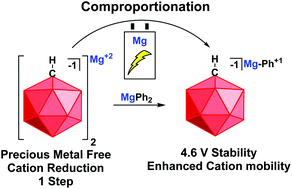
Inorg. Chem. Front., 2015,2, 1101-1104
https://doi.org/10.1039/C5QI00171D
Tuning oxygen-sensing behaviour of a porous coordination framework by a guest fluorophore
A new oxygen-sensing material with desirable excitation/emission characteristics was achieved by using a simple guest fluorophore.
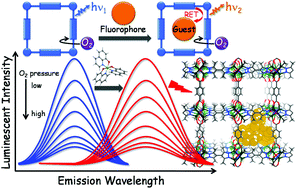
Inorg. Chem. Front., 2015,2, 1085-1090
https://doi.org/10.1039/C5QI00157A
Ultra-rapid microwave synthesis of Li3−x−yMxN (M = Co, Ni and Cu) nitridometallates
Phase-pure ternary lithium nitrides with demonstrable Li+ ion vacancy concentrations can be synthesised by low power microwave reactions in times reduced by orders of magnitude over conventional heating approaches; the electrochemical performance of the materials has been determined.
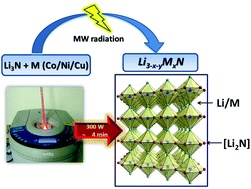
Inorg. Chem. Front., 2015,2, 1045-1050
https://doi.org/10.1039/C5QI00145E
Oxygen activation by copper camphor complexes
In situ reduction of CuCl2 enables formation of Cu(I) complexes prone to activate molecular oxygen from air towards catalytic oxidation of 1,3-dicarbonyls.

Inorg. Chem. Front., 2015,2, 1019-1028
https://doi.org/10.1039/C5QI00064E
Multichromophoric di-anchoring sensitizers incorporating a ruthenium complex and an organic triphenyl amine dye for efficient dye-sensitized solar cells
A metal–organic combinatorial dye comprised of a ruthenium complex and an organic triphenyl amine dyad has been constructed.
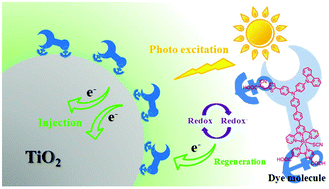
Inorg. Chem. Front., 2015,2, 1040-1044
https://doi.org/10.1039/C5QI00095E
A soil/Vulcan XC-72 hybrid as a highly-effective catalytic cathode for rechargeable Li–O2 batteries
We report for the first time a hybrid of soil and commercial Vulcan XC-72 carbon (labeled as soil/C) as a high-performance cathode catalyst for rechargeable lithium–oxygen batteries. It was found that soil as a low cost and metal-free void volume expander in the hybrid catalyst is promising in the application of rechargeable Li–O2 batteries.
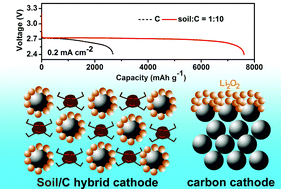
Inorg. Chem. Front., 2015,2, 1006-1010
https://doi.org/10.1039/C5QI00149H
Molecular spin qubits based on lanthanide ions encapsulated in cubic polyoxopalladates: design criteria to enhance quantum coherence
Axial compression and a magnetic field can help to get coherent spin qubits.
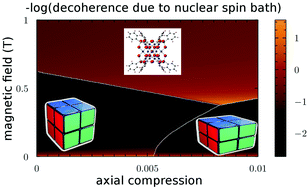
Inorg. Chem. Front., 2015,2, 893-897
https://doi.org/10.1039/C5QI00142K
Graphene oxide and reduced graphene oxide hybrids with spin crossover iron(III) complexes
Graphene oxide and reduced graphene oxide hybrids with spin crossover complexes show the coexistence of electron conduction and unique magnetic behaviors.
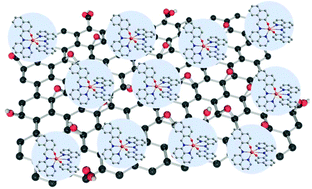
Inorg. Chem. Front., 2015,2, 886-892
https://doi.org/10.1039/C5QI00097A
DFT and TD-DFT studies of electronic structures and one-electron excitation states of a cyanide-bridged molecular square complex
The electronic structures and physical properties of [Co2Fe2(CN)6(tp*)2(dtbbpy)4](PF6)2·2MeOH are investigated by DFT and TD-DFT calculations.
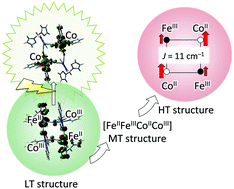
Inorg. Chem. Front., 2015,2, 771-779
https://doi.org/10.1039/C5QI00091B
DNA/protein binding, DNA cleavage, cytotoxicity, superoxide radical scavenging and molecular docking studies of copper(II) complexes containing N-benzyl-N′-aryl-N′′-benzoylguanidine ligands
Copper(II) complexes containing trisubstituted guanidine ligands were prepared, characterized and evaluated for their biological applications.
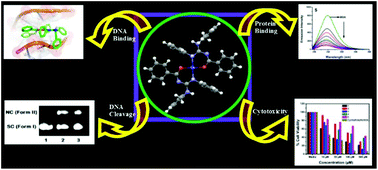
Inorg. Chem. Front., 2015,2, 780-798
https://doi.org/10.1039/C4QI00234B
Iron(II) complexes of 4-sulfanyl-, 4-sulfinyl- and 4-sulfonyl-2,6-dipyrazolylpyridine ligands. A subtle interplay between spin-crossover and crystallographic phase changes
The compound shown exhibits an abrupt thermal spin-transition, with an accompanying crystallographic phase change at slightly lower temperature which is visible as a shoulder on the susceptibility curve.
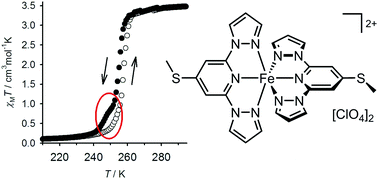
Inorg. Chem. Front., 2015,2, 662-670
https://doi.org/10.1039/C5QI00083A
Stable iso-bacteriochlorin mimics from porpholactone: effect of a β-oxazolone moiety on the frontier π-molecular orbitals
A β-oxazolone moiety on porpholactone plays an important role in stabilizing such hydroporphyrin structures through tuning energy gaps between the frontier π-molecular orbitals, which is verified by MCD studies combined with TD-DFT calculations.
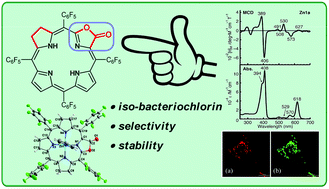
Inorg. Chem. Front., 2015,2, 671-677
https://doi.org/10.1039/C5QI00054H
Facile fabrication of InSe nanosheets: towards efficient visible-light-driven H2 production by coupling with P25
InSe nanosheets and their coupling with P25 have been successfully synthesized via a hydrothermal–calcining process, and they were for the first time used for visible light photocatalytic H2 production.
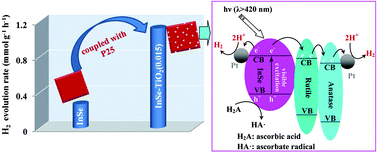
Inorg. Chem. Front., 2015,2, 657-661
https://doi.org/10.1039/C5QI00075K
Control of pore distribution of porous carbons derived from Mg2+ porous coordination polymers
Control of pore distribution of porous carbons from porous coordination polymers.
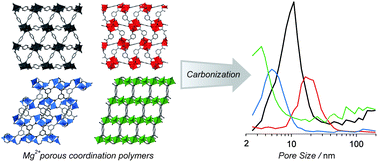
Inorg. Chem. Front., 2015,2, 473-476
https://doi.org/10.1039/C5QI00019J
Synthesis, structure, and alkyne insertion of a mixed-sandwich zirconacarborane alkyl
A neutral mixed-sandwich zirconacarborane alkyl reacts with both internal and terminal alkynes to give the Zr–C σ bond mono-insertion products, in which both electronic and steric factors play a role in the regioselectivity.

Inorg. Chem. Front., 2015,2, 467-472
https://doi.org/10.1039/C4QI00244J
Positioning of the HKUST-1 metal–organic framework (Cu3(BTC)2) through conversion from insoluble Cu-based precursors
A Cu-based metal–organic framework (HKUST-1) was synthesized from insoluble precursors and positioned using sol–gel based coatings.
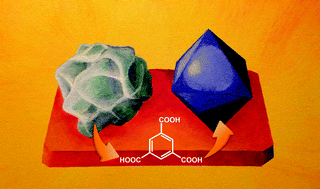
Inorg. Chem. Front., 2015,2, 434-441
https://doi.org/10.1039/C4QI00215F
Guest dependent reversible single-crystal to single-crystal structural transformation in a flexible Gd(III)-coordination polymer
We describe a 3D flexible Gd(III)-coordination polymer, constructed from a linear carboxylate ligand, which shows reversible single-crystal to single-crystal “guest-responsive fitting” of the channels and carboxylate shift process, upon inclusion of aldehyde guests.
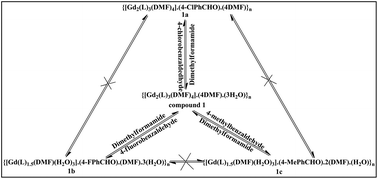
Inorg. Chem. Front., 2015,2, 395-402
https://doi.org/10.1039/C4QI00193A
Macroscopic polarity control with alkali metal cation size and coordination environment in a series of tin iodates
The IO3 groups in Na2Sn(IO3)6 are aligned in a parallel manner attributed to the six-coordinate Na+ cation, whereas the IO3 polyhedra in Cs2Sn(IO3)6 rotate with respect to Sn4+ due to the nine-coordinate Cs+ cation.
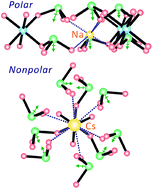
Inorg. Chem. Front., 2015,2, 361-368
https://doi.org/10.1039/C4QI00243A
Organic melt, electride, and CVD induced in situ deposition of luminescent lanthanide imidazolate MOFs on nanostructured alumina
Highly luminescent MOF coatings were grown on nanostructured alumina membranes via melt, electride and CVD approaches.
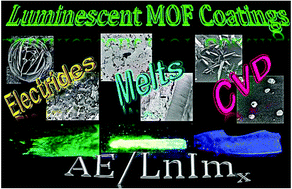
Inorg. Chem. Front., 2015,2, 237-245
https://doi.org/10.1039/C4QI00184B
Porous ZnCo2O4 nanoparticles derived from a new mixed-metal organic framework for supercapacitors
ZnCo2O4 nanoparticles were synthesized by thermal annealing of a new mixed-metal MOF and show high capacitance for electrochemical capacitors.
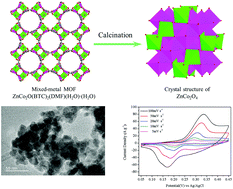
Inorg. Chem. Front., 2015,2, 177-183
https://doi.org/10.1039/C4QI00167B
An outstanding second-harmonic generation material BiB2O4F: exploiting the electron-withdrawing ability of fluorine
The fluorine atoms in BiB2O4F withdraw the non-bonding electrons of Bi3+ and thus strongly increase the SHG efficiency.
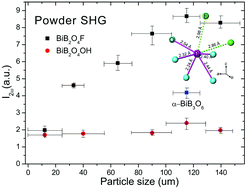
Inorg. Chem. Front., 2015,2, 170-176
https://doi.org/10.1039/C4QI00192C
Hierarchical nanoarray materials for advanced nickel–zinc batteries
Due to the unique structural advantages, hierarchical Co3O4@NiO nanoarrays can be regarded as advanced electrodes for Ni–Zn batteries.
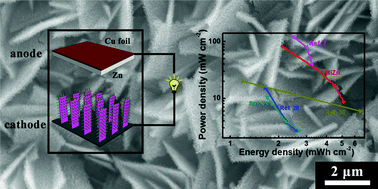
Inorg. Chem. Front., 2015,2, 184-187
https://doi.org/10.1039/C4QI00143E
About this collection
Read some of the best research published by Inorganic Chemistry Frontiers in 2015. These articles are recommended by ICF referees as being of significant novelty and interest.